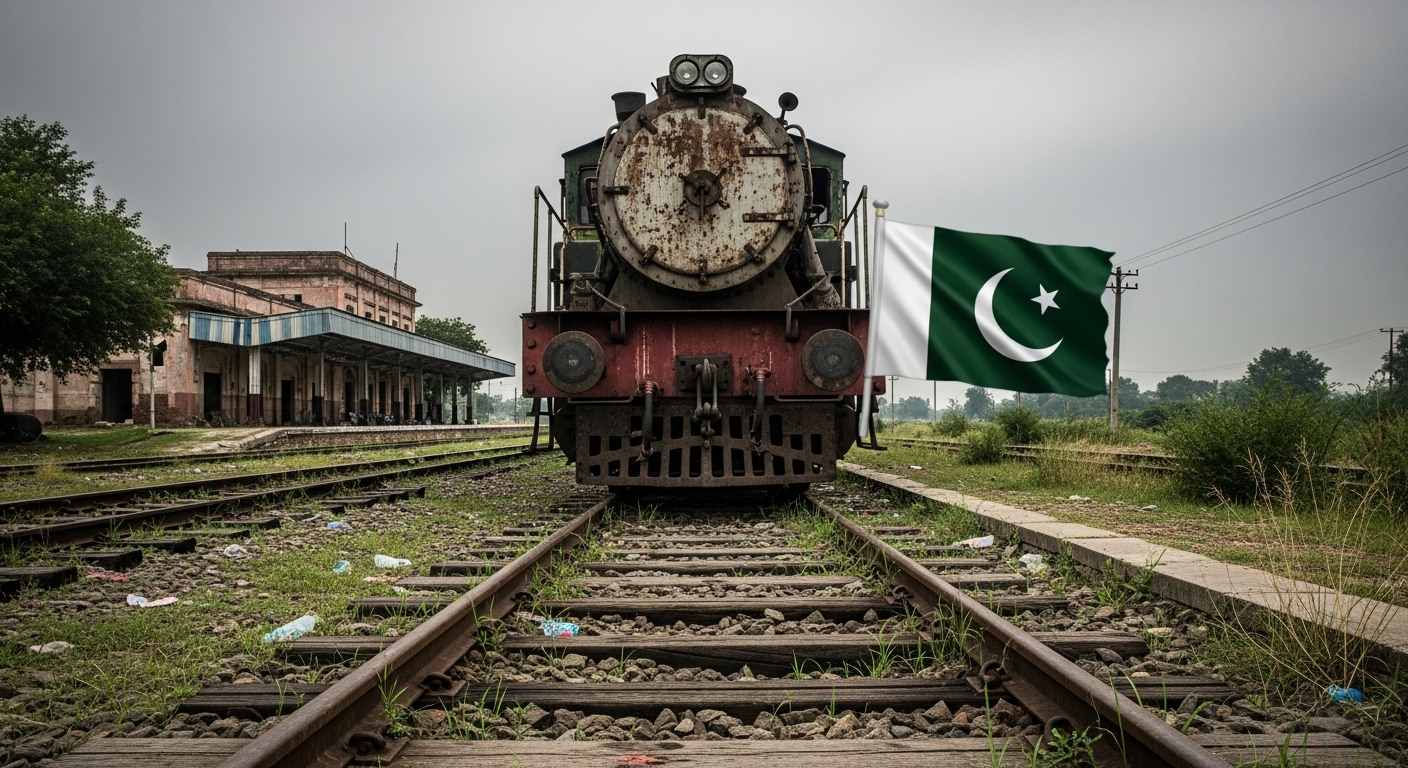Neglected Tracks, Forgotten Routes: Why Pakistan’s Old Railway Lines Remain in Ruins
Pakistan’s railway network, once a symbol of connectivity and progress, now suffers from neglect and decay—especially the old, underutilized railway lines that have been silently rusting away. These railway tracks, mostly in the rural and underdeveloped regions of Sindh, Balochistan, and southern Punjab, tell a story of missed opportunities, poor planning, and a lack of political will.
While major rail routes like the Karachi–Lahore Main Line-1 (ML-1) have occasionally grabbed attention for upgrades, dozens of other critical links such as Rohri–Chaman, Hyderabad–Mirpurkhas, and Kundian–Jand lie in desperate need of repair and revitalization. Their deteriorated condition has not only hurt local travel but also stalled regional economic integration.
Railway Decay: A Timeline of Neglect
Many of these secondary rail lines date back to the British colonial era and were once vital lifelines for small towns and agricultural communities. They served to transport wheat, cotton, coal, and livestock to major cities and ports.
However, over the decades, due to limited investment, theft of railway materials, political instability, and poor management, these lines became increasingly unreliable. As roads and highways developed, railway usage declined, and entire routes were simply abandoned without any strategic reassessment.
Economic Potential Wasted
Experts argue that ignoring these old lines has hurt Pakistan’s economy—especially in the less developed areas.
For example, the Hyderabad–Mirpurkhas line, which was once a key sugarcane transport route, has been non-operational for years. Sugar mills now depend on costly and inefficient road transport, increasing product costs and delivery delays.
Similarly, the Rohri–Chaman railway line, which could have served as a powerful trade corridor between Pakistan and Afghanistan, remains half-functional. Given the rise in regional trade under the China-Pakistan Economic Corridor (CPEC), repairing this route could facilitate smoother cross-border logistics. Unfortunately, budget constraints and bureaucratic red tape keep this vision buried.
Voices from the Ground
People living near these broken rail lines often express frustration. Local farmers, traders, and students speak of how the loss of these services has increased their travel time and transport expenses.
“We used to load vegetables directly onto the train and reach the city in a few hours,” says Gul Hassan, a farmer near Jacobabad. “Now, we rely on overloaded trucks that charge three times more.”
Similarly, railway workers who once relied on jobs connected to these routes have been laid off or transferred, leaving many families in economic distress.
Security and Maintenance Issues
Many of these old lines have also become hotspots for theft and vandalism. In rural areas, railway tracks are often stripped for scrap metal, while stations lie abandoned and misused. Without regular patrols or maintenance, the infrastructure has degraded rapidly.
Furthermore, in flood-prone areas of Sindh and Balochistan, many embankments have been washed away due to a lack of disaster-proof engineering. Repair costs continue to mount, and yet action remains limited to emergency fixes instead of long-term planning.
What’s Holding Back the Repairs?
There are multiple factors responsible for the delay in reviving Pakistan’s old railway lines:
- Budget Constraints: Pakistan Railways faces massive financial losses annually, and most of its limited budget goes toward paying salaries and maintaining the main line (ML-1).
- Lack of Political Interest: Since these rail routes don’t run through major political strongholds, they receive little attention during budget allocations or development schemes.
- Poor Governance: Mismanagement, corruption in procurement, and outdated policies have slowed progress on every front of railway rehabilitation.
- Private Transport Lobby: A growing number of private transport operators, who profit from road-based logistics, are believed to discourage government investment in rail revival.
A Path Forward
Experts suggest that the government should not look at these old rail lines as “burdens” but as opportunities for growth. Reviving them through public-private partnerships, low-cost rehabilitation projects, and regional trade incentives could create jobs, reduce road congestion, and enhance sustainable transport.
Additionally, incorporating these routes into broader economic plans—such as special economic zones (SEZs) and agricultural supply chains—can boost their utility.
The Ministry of Railways has floated several proposals, but implementation remains slow. Unless these plans are urgently turned into action, Pakistan risks permanently losing a strategic transport asset.
Conclusion
The forgotten railway lines of Pakistan are more than just rusty tracks—they are a symbol of rural disconnect and unfulfilled potential. Restoring them won’t just bring back trains; it could reconnect entire communities, reduce transport costs, and bring long-overdue economic justice to remote regions.
If Pakistan aims for inclusive development and regional integration, the revival of its neglected railway corridors is not just desirable—it is essential.

